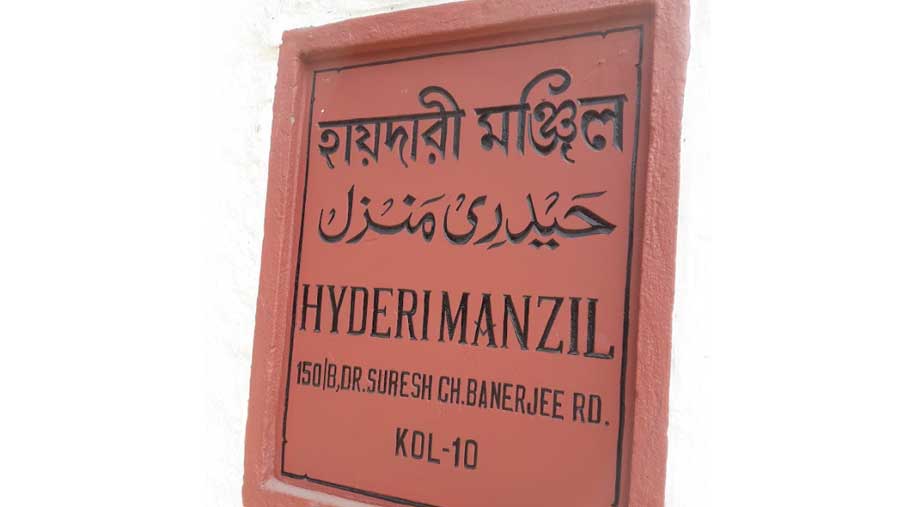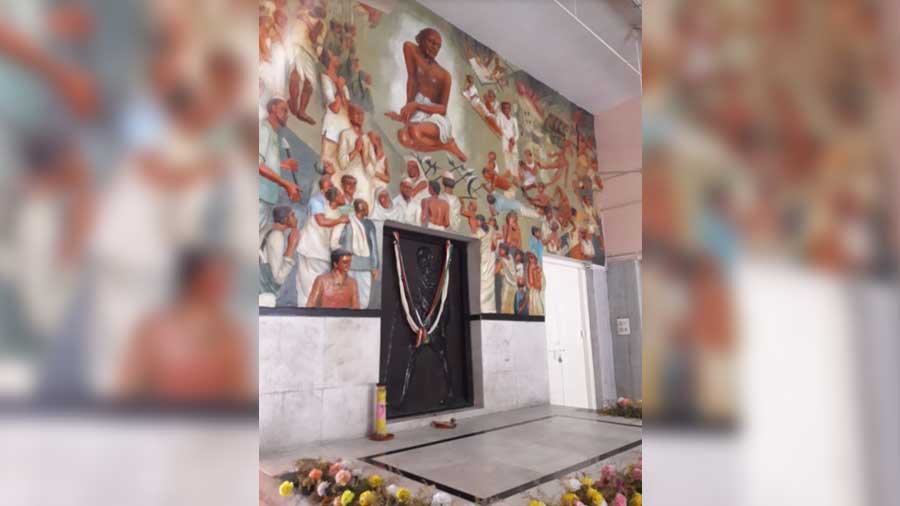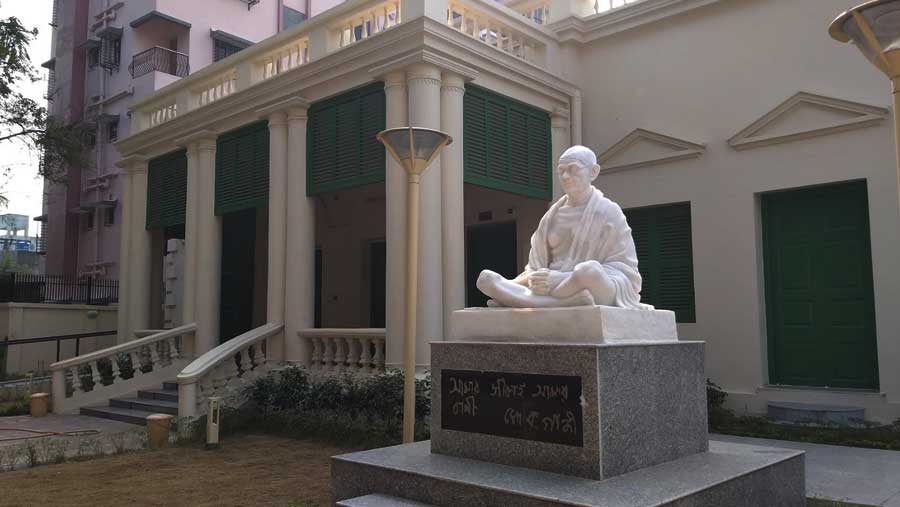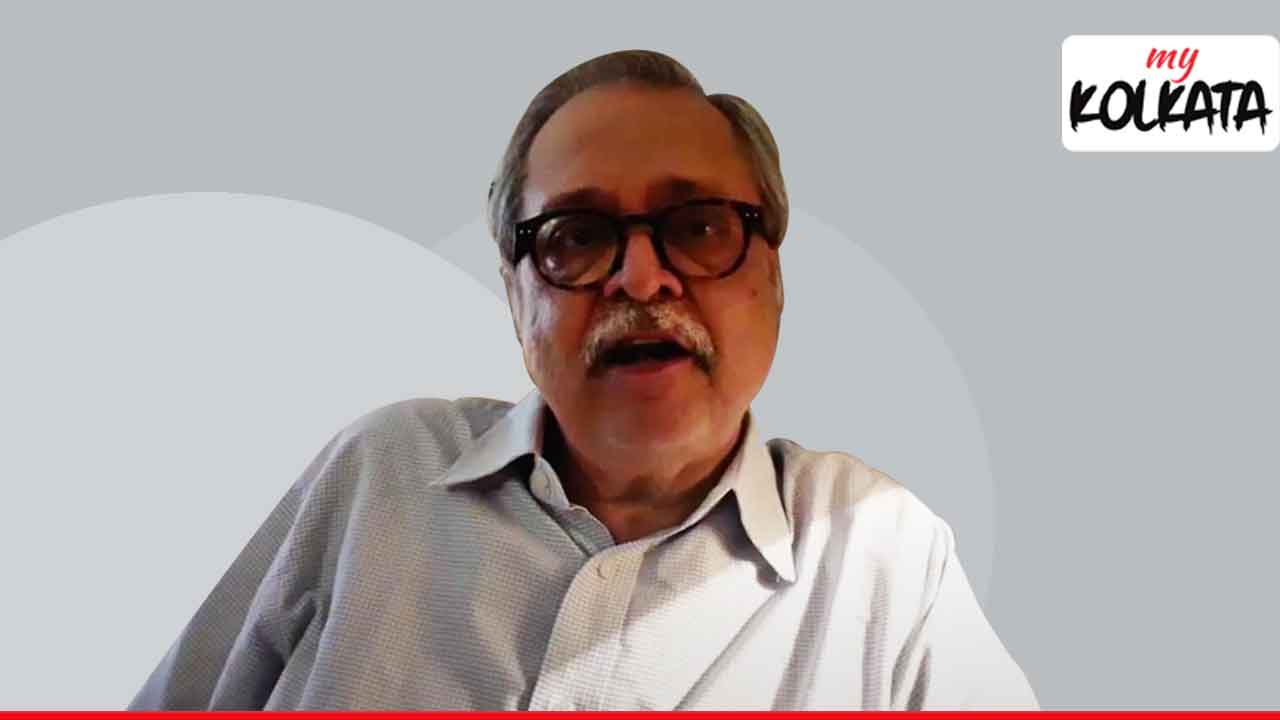At the stroke of midnight, when the world was in slumber and India was waking to her freedom, a 78-year-old man was in deep sleep.
He was nowhere near any celebration at Delhi’s Central Hall of Parliament or London’s India House — where a mob had gathered before his illuminated poster.
He was sleeping in a dilapidated house in Kolkata’s east, where not a single flame of joy was flickering. The primary architect of India’s freedom struggle willingly rejected the limelight.
He is, of course, Mahatma Gandhi and the date was August 15, 1947 — the day India got her freedom.
Troubled times for Kolkata

A newspaper clipping from 1947 reporting Gandhi's fast in Kolkata
Dejected and cornered by the political current of the time, Gandhi came to Kolkata in early August to visit Noakhali — where Hindus were massacred in October 1946. However, Kolkata itself was burning then and Muslim League leaders requested him to stay there to save the city’s Muslims.
Gandhi agreed with a condition that Bengal Provincial Muslim League leader Huseyn Shaheed Suhrawardy stay with him. He also said that he wanted to stay in a riot-ravaged locality of Kolkata — with no security.
A house barely fit to stay

Hyderi Manzil in Beleghata was chosen for Gandhi after he said he wanted to stay in a riot-ravaged locality of Kolkata Somen Sengupta
To match the demand, a dilapidated house named Hyderi Manzil, situated at 150 Beleghata Main Road, was chosen. It was big, but had cracked walls and broken windows. There was no electricity and only one toilet, which was barely fit for use. It was owned by a Gujarati trader and named after his daughter, Hyderi.
From August 13 to September 7, 1947, Gandhi stayed in this house and encountered one of his last and biggest political challenges — from which he emerged as a champion of communal harmony.
Gandhi’s eventful stay
During his stay here, titans like JB Kripalini, PC Ghosh, Sarat Chandra Bose, Shyama Prasad Mukherjee, Jyoti Basu, Dr Bidhan Chandra Roy, Ram Manohar Lohia and Raja Gopalachari and an array of journalists from across India and abroad came to meet him.

A display housing weapons surrendered to Gandhi during his stay here Somen Sengupta
This was the place where Gandhi confronted a hostile mob baying for blood. It was here that he offered himself up before armed people looking to kill Suhrawardy. And it was here that by fasting for more than 74 hours, he forced a burning city to accept peace and rioters to give up their weapons. He also edited the last few issues of ‘Young India’ from here.
Gandhi visited Kolkata dozens of times and each time, he stayed in luxurious accommodations like Chowringhee’s Grand Hotel, Dalhousie’s Great Eastern Hotel, GD Birla’s palace at Ballygunge, Bhupen Bose’s mansion at Shyambazar or Sarat Bose’s bungalow at Woodburn Park.
But destiny brought him, on his last visit, to Hyderi Manzil — now known as Gandhi Bhavan.

A hall inside the house Somen Sengupta
After prolonged neglect, the place was given a massive makeover in 2019. The entire building has had a refined renovation and a small museum on Gandhi’s tryst with Kolkata is set up inside — though it is not yet open to the public. The evenings in the illuminated compound are especially attractive and the place might soon become a venue for cultural events.
Somen Sengupta is passionate about heritage and travelling and has been writing about it for 26 years. When he is not executing duties as a senior executive in an MNC, he keeps an eye out for intriguing historical trivia and unearths forgotten stories. This also makes him an avid quizzer.

